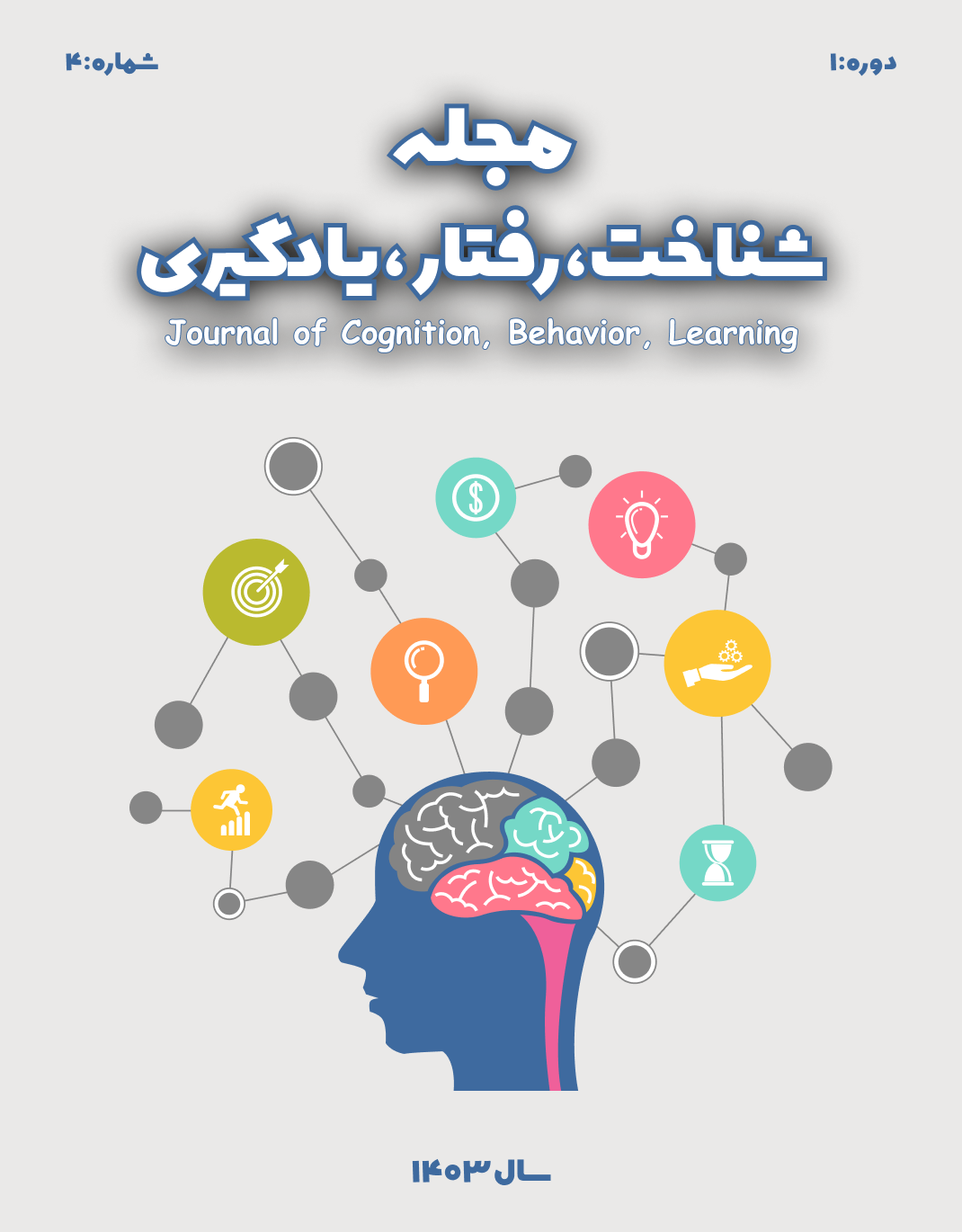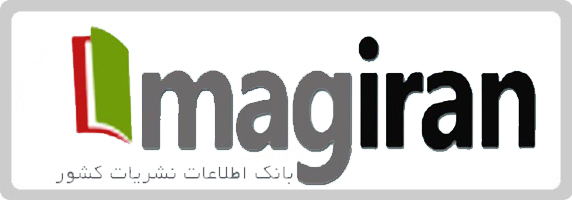شناسایی عوامل موثر بر توسعه آموزش مداوم کارکنان در دانشگاه های استان بغداد
کلمات کلیدی:
آموزش مداوم, آموزش کارکنان, یادگیری محیط کار, دانشگاههای بغداد, توسعه حرفهایچکیده
این مطالعه با هدف شناسایی عوامل مؤثر بر توسعه آموزش مداوم کارکنان در دانشگاههای استان بغداد انجام شد. این پژوهش از نوع کاربردی و با رویکرد آمیخته اکتشافی متوالی اجرا شد. در بخش کیفی، دادهها از طریق مصاحبه نیمهساختاریافته با ۱۵ نفر از خبرگان علمی و اجرایی دانشگاهی گردآوری و با استفاده از روش دادهبنیاد تحلیل شد. در بخش کمی، ۱۷۴ نفر از کارکنان دارای حداقل ۱۰ سال سابقه شغلی و سابقه آموزش حین خدمت از طریق نمونهگیری خوشهای چندمرحلهای انتخاب شدند. ابزار گردآوری دادهها پرسشنامهای محققساخته بود که روایی آن با تحلیل عاملی تأییدی و نرمافزار Smart PLS بررسی شد. برای آزمون فرضیهها از آزمونهای تی تکنمونهای، تحلیل واریانس F و رگرسیون چندگانه استفاده گردید. یافتههای استنباطی نشان داد که هفت عامل اصلی شامل بسترهای آموزش مداوم، الزامات اجرایی، مدیریت و رهبری، طراحی آموزشی فناورانه، پداگوژیکی، راهبردهای آموزشی، و ارزیابی و بازخورد تأثیر معناداری بر توسعه آموزش مداوم دارند. نتایج رگرسیون نشان داد متغیرهای طراحی آموزشی فناورانه (ß=0.521, p<0.001) و پداگوژیکی (ß=0.179, p<0.001) بیشترین تأثیر را بر توسعه آموزش مداوم دارند. ضریب تعیین مدل 0.954 بود که بیانگر قدرت پیشبینی بالای مدل است. شاخص GOF مدل برابر با 0.676 و در سطح قوی ارزیابی شد. همچنین، تحلیل واریانس تفاوت معناداری بین میانگین مؤلفهها نشان داد (F=10.85, p<0.001). یافتهها حاکی از آن است که توسعه آموزش مداوم در دانشگاههای استان بغداد تابعی از مجموعهای از عوامل سازمانی، فناورانه، آموزشی و مدیریتی است. پشتیبانی ساختاری، فرهنگی و فناورانه دانشگاهها نقش کلیدی در ارتقاء مستمر شایستگی کارکنان دارد. پیشنهاد میشود طراحی هوشمندانه برنامههای آموزشی، همراه با ارزیابی منظم درونی و بیرونی، به عنوان راهبردی برای توسعه آموزش مداوم مدنظر قرار گیرد.
دانلودها
مراجع
Ataei, M., Safarian Hamdani, S., & Zamani, F. (2019). A model for effective teaching in continuous medical education programs. Mazandaran University of Medical Sciences Journal, 29(176), 202-207. https://jmums.mazums.ac.ir/article-1-13004-en.html
Cox, C. W., & Gunderman, R. B. (2017). Andragogic approaches to continuing medical education. Academic radiology, 24(10), 1325-1326. https://doi.org/10.1016/j.acra.2017.05.004
Dewi, M., Suriani, N., Khusnul, L., & Malimi, L. (2024). Analysis Of The Influence Of Continuous Training Development And Education On Professional Competence Of Teachers In Public Schools. https://jonedu.org/index.php/joe/article/view/5194
Farastekhah, M. (2021). Under the skin of the humanities in Iran: The duel of actors and structures. Humanities Development Quarterly, 2(4), 5-18. https://doi.org/10.22047/hsd.2022.182458
Farstakhah, M. (2020). Under the skin of Iran's humanities, the duel between activists and structures. Two Quarterly Journals of Humanities Development, 2(4), 18-15. https://journals.sagepub.com/doi/abs/10.1177/08969205231176051
Filipe, H. P., Mack, H. G., & Golnik, K. C. (2017). Continuing professional development: progress beyond continuing medical education. Ann Eye Sci, 2(7), 46. https://doi.org/10.21037/aes.2017.04.01
Hilty, D. M., Turvey, C., & Hwang, T. (2018). Lifelong learning for clinical practice: how to leverage technology for telebehavioral health care and digital continuing medical education. Current psychiatry reports, 20(3), 1-11. https://doi.org/10.1007/s11920-018-0878-y
Lam, N., Huong, H., & Tuan, C. (2018). Preparation for major burns incidents: evaluation of continuing medical education training courses for professionals. Annals of burns and fire disasters, 31(4), 322. https://pmc.ncbi.nlm.nih.gov/articles/PMC6441574/
McCray, J., Warwick, R., & Palmer, A. (2018). Impressions of action and critical action learning: exploring the leadership development of senior doctors in an English healthcare organization. International Journal of Training and Development, 22(1), 69-85. https://doi.org/10.1111/ijtd.12119
Mohammadi, A. R., Parsa, A., Shahi, S., Darfash, H., & Mehralizadeh, Y. (2023). Identification of the status of continuous education in the Iranian National Tax Administration. Tax Research Journal, 108, 12-39. https://doi.org/10.61186/taxjournal.34.60.7
Mostafai Asadabad, G. R., Sharifi, A., Akbari, M., & Lotfi, M. (2024). The role of artificial intelligence in personalized learning. http://www.journalfkipuniversitasbosowa.org
Parvin Yan Nasab, A., & Taheri, N. K. (2020). Effectiveness of continuing nursing education program in Iran: a narrative review. Journal of nursing education, 11(4), 1-12. https://jne.ir/article-1-1326-en.pdf
Pouriyan Nasab, P., & Taheri, N. K. (2022). The effectiveness of continuous nursing education programs in Iran: A narrative review. Nursing Education Journal, 11(4), 1-12. https://jne.ir/article-1-1326-en.pdf
Sadeghitabar, P., & Shariatmadari, M. (2020). Designing and validating the continuing medical education model based on blended learning. Research in School and Virtual Learning, 8(1), 79-97. https://journals.pnu.ac.ir
Saeedavi, K., Hosseinpour, M., & Barakat, G. (2023). Identification and elucidation of strategic facilitating factors for the heutagogical approach in the continuous education of managers. Journal of Medical Education, Jundishapur Center for Studies and Development of Medical Education, 14(4), 466-480. https://journals.sagepub.com/doi/abs/10.1177/1045159520905364
Seydi, S., Goudarzi, A., Mahmoudi Yeganeh, I., & Bahrooy, M. (2023). Examination of developments in continuous learning and academic excellence and the role of continuous learning systems. https://www.emerald.com
Shokri, N., Shokri, M., & Azarian, M. (2024). Investigating the status of the importance of teachers' professional development in students' success. https://eric.ed.gov/?id=EJ1312512
Yousefi, Z., Imani, M. N., & Jahed, H. A. (2023). Determining the Priority of Dimensions, Components and Indicators to Improve the Effectiveness of in-Service Training Courses for Staff of the Central Headquarters of the Ministry of Health, Treatment and Medical Education. Health Management, 14(49), 35-50. https://doi.org/10.30495/JHM.2023.74752.11152
دانلود
چاپ شده
ارسال
بازنگری
پذیرش
شماره
نوع مقاله
مجوز
حق نشر 2025 فرح خیرالله فواز الحیانی (نویسنده); محمد حسین پور (نویسنده مسئول); منیر فخری صالح, نرگس سعیدیان خوراسگانی (نویسنده)

این پروژه تحت مجوز بین المللی Creative Commons Attribution-NonCommercial 4.0 می باشد.





